Otoplasty, surgery for protruding ears
Otoplasty is a surgical procedure that can be performed on adults from the age of 6. The scar is placed behind the ear.

Otoplasty is a surgical procedure that can be performed on adults from the age of 6. The scar is placed behind the ear.
This surgical procedure is most often performed on children between the ages of 9 and 12, who have suffered from teasing since they started school at around age 6, but who have finally found the courage to undergo surgery. Note that in some cases, when it’s a question of correcting the folding defect in the upper part of the ear, we can also resort to the EarFold™ procedure, a rapid and minimally invasive technique performed under local anesthetic. More rarely, I see adults; sometimes, the parents of children I’ve operated on. Otoplasty is a very gratifying operation that brings great joy to the child and real relief to the parents. In fact, some are very worried about the surgery, wondering whether it’s worth it. But very quickly, the smile on their child’s face comforts them completely.
Otoplasty is a cosmetic surgery procedure covered by the French Social Security system.
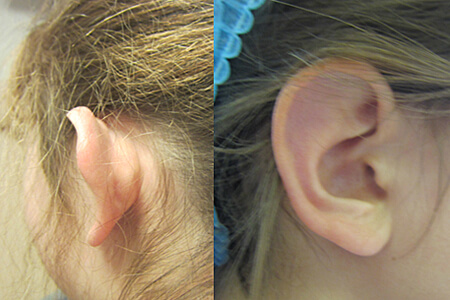
Surgery for protruding ears can be performed as early as age 6. A clinical examination helps define the surgical procedure. I explain the scar, the steps to be taken and warn of possible complications, in particular the risk of hypertrophic scarring.
1. Helix; 2. Darwin’s tubercle; 3. Scaphoid gutter; 4. Cavum; 5. Concha; 6. Anthelix; 7. Anthelix root; 8. Anti-trago helical fissure; 9. Lobule; 10. Anterior and posterior branches of antherix; 11. Navicular fossa; 12. Concha cymba; 13. Helix root; 14. Preauricular groove; 15. Tragus; 16. Antitragus; 17. Intertragal notch; 18. External acoustic meatus.
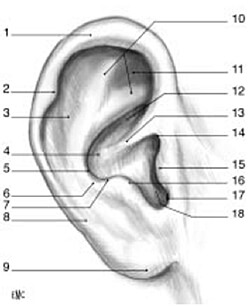

Le Magazine de la Santé, broadcast on France 5, asked me to perform the otoplasty surgical technique for one of their programs, so I was filmed operating and explaining the surgical procedures. I often pass on this reference during consultations. The procedure lasts one hour, usually under general anaesthetic, which is the most comfortable for the child. The scar is placed behind the ear, and the cartilage is shaped with a rasp. I suture with absorbable suture so as not to leave any material in the ears that could cause infection and unsightly scars. Healing maintains the result. A bandage is then applied around the head to hold the ears in place. For 3 days. The young patient can be discharged the same day or the following morning.
Pain varies from patient to patient, and is soothed by analgesics. On the third day, the dressing is replaced by a bandage. A compression bandage will need to be worn day and night for about 15 days, to allow time for the thread to resorb and for healing to fix the result. The ears are a little swollen and ecchymotic for 8 to 10 days, but the result is practically achieved in 15 days. On average, the swelling will subside completely in 4 weeks.
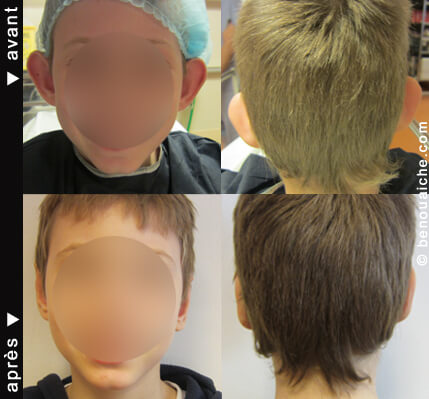
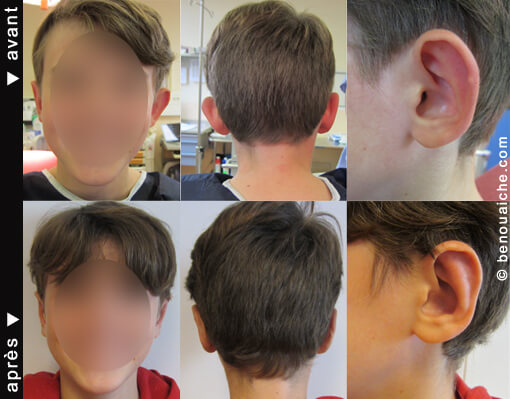
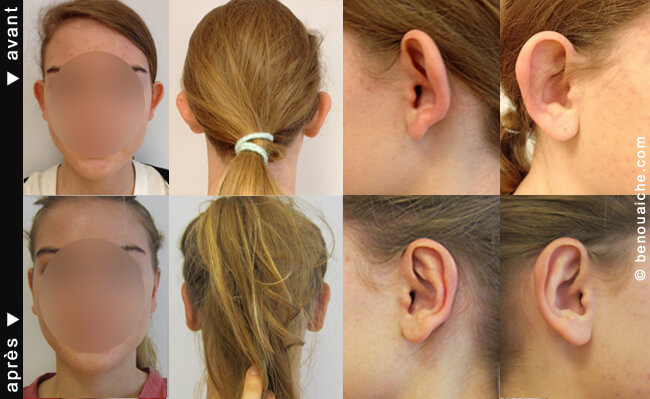

Do you have a question ?
If you would like to receive advice or further information, please do not hesitate to contact me by email
The information provided on this site is not intended to serve as a substitute for medical prescription.
Make an appointment on
Doctolib
INFORMATION ABOUT COOKIES
By browsing this website, you agree to the use of cookies to improve your browsing experience and our services by analyzing website usage.
for more information on our cookies policy and how to configure them, Click here
When you browse our website, you may record or read information on your terminal, depending on your choices.
Do you accept the deposit and reading of cookies to enable us to analyze your browsing habits and measure the audience of our site?
You can also leave me a comment. I will reply as soon as possible.